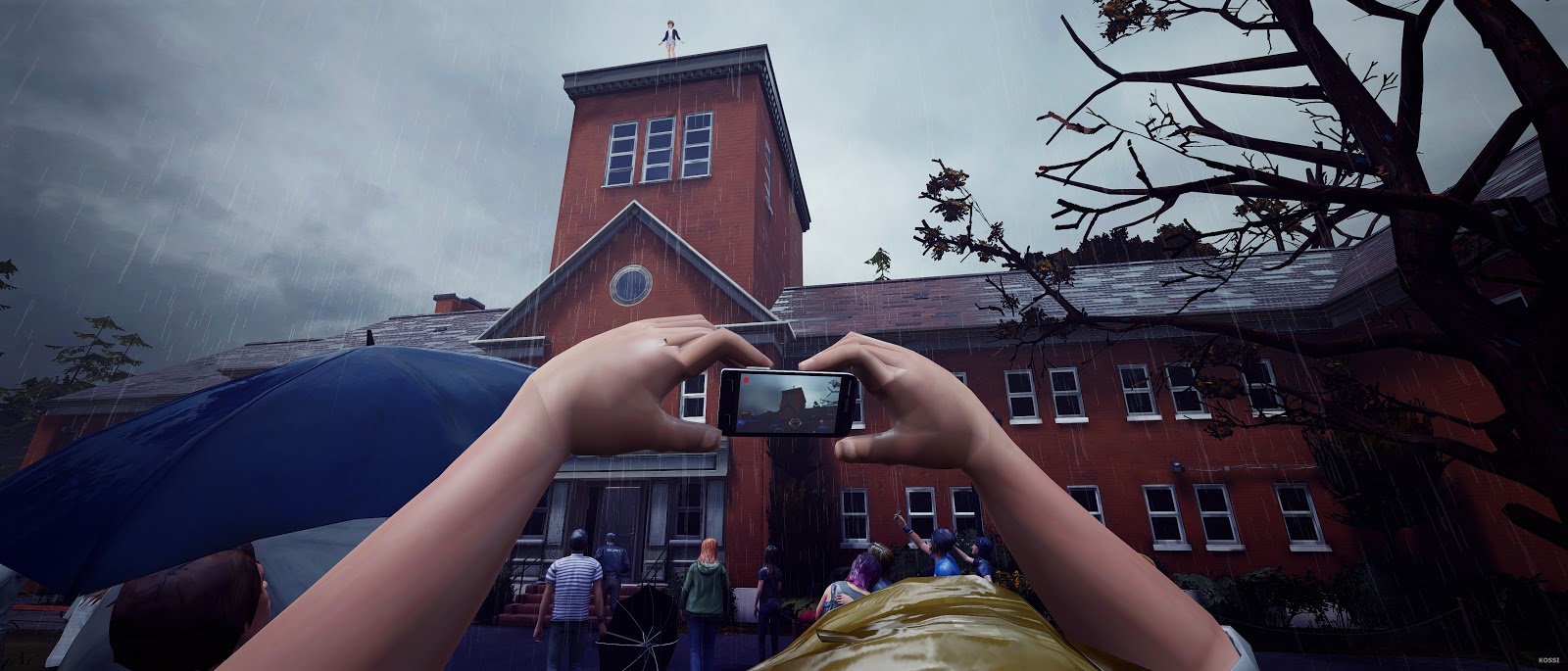Review: Life is Strange
Warning: This review contains spoilers of the entire game. Due to the episodic nature of the title, it would be impossible to review the game without speaking to its content.
Written by Ben Vollmer
Life is Strange can be summed up in a two minute sequence that takes place at the end of an inessential sidequest. You’re met with the task of saving a young girl’s life and providing her safe passage from a burning building. Her name is Alyssa, and as with everything else in Life is Strange, our decisions have had a substantial impact on her life. Through the entirety of the game, Alyssa is met with misfortune. Stray footballs, paperplanes and other objects frequently find a way to hit her. Only, with our protagonist’s ability to rewind time, we have the ability to save her from this constant misery.
For a variety of reasons, I found myself often letting these objects hit Alyssa in the head without getting her out of the way. So naturally, she is concerned by the mere presence of Max (the protagonist) when we approach her in the burning building. If I had done the right thing and saved her from misfortune earlier in the game, she may not have backed off at the sight of me into a burning pit of flames.

For every every reason this sad bit of irony makes Life is Strange great, it also brings about frustration. As with most narratives that deal with time travel, the unfortunate side-effect is a lack of consequence. Despite Alyssa’s initial death, the player is allowed to rewind time and figure out a workaround. It makes everything seem inconsequential in a sense, giving way to those who wish to complain about a lack of importance in the decision making. It’s certainly a valid concern, as this is something that plagues the entire game. Almost every time, there’s a workaround.
It’s entirely possible to acknowledge this and still love how Life is Strange makes your decisions felt. Even the smallest reactions to how people treat our protagonist are incredibly telling. In my play through, I largely ignored the needs of others in the town, instead focusing on our friend/love interest, Chloe. It seems just as plausible that someone might make the exact opposite choices, feeling more in debt to the city than any one specific person.
In terms of actual mechanics, Life is Strange is eerily similar to that of a Telltale game. Square Enix smartly puts a fresh coat of paint on the visuals to set it apart, but the decision-making process is largely the same. There’s a similar amount of emphasis on cut-scene breaks, giving the player some ability to free roam every now and again. Interaction outside of the main narrative plays a more pivotal role in Life is Strange, as you find yourself partaking in small sidequests very similar to the ones mentioned above.
As with Telltale, the game suffers most when it has you focus on fetch questing for certain items that often prove unimportant. There’s a particular sequence about halfway through the game that has you looking for a half-dozen bottles, just for Chloe to blow them all to pieces. Given that the game’s length is already pretty substantial (compared to others of its kind, at the very least), the choice to include things like this is pretty baffling. Luckily, they’re limited to one or less per episode.

Now that the objective qualities of the game have been addressed, it needs to be mentioned just how damned good this game is. Life is Strange is centered around the decisions made by an 18-year-old girl by the name of Maxine Caulfield, who sees an old friend shot to death by an angry, rotting soul of a character in Nathan Prescott. There are a lot of real parallels to current social movements, and one of those is the representation of Nathan as a sociopathic, misogynistic teen who seems like a direct representation of a particular real-life shooter from a couple of years ago. The dark nature of the content is pretty jarring, but it’s one of the few games that has directly addressed misogyny and gun violence in the same breath.
It’s of little surprise that the game’s focus is on two young women, in Max and Chloe. The game doesn’t unfairly portray either sex, but it shows both women regularly deal with normalized and forgiven acts of sexism. It’s campy writing and over-the-top style might be seen as driving the point home a little too hard (especially after a certain late-game reveal), but there’s a certain truth to misery each character has to experience. This is doubled down on in the second episode, when a young woman (who just so happens to live an avidly religious lifestyle) is videotaped kissing several guys at a party. After the video goes viral, the young woman kills herself (or not, depending on how well you handle the situation). Life is Strange might seem like a bundle of shock value until you consider how carefully it portrays real-life mental health and social issues.

The game also refuses to shoehorn a love story into the narrative, which makes the understated relationship between Chloe and Max that much more powerful. There are a variety of decisions that could lead to a less profound relationship between the two, but it seems likely that most players will find Max deeply connected to the blue-haired heretic. By the end of Life is Strange, when the game essentially asks you to choose between the town and Chloe, all of the little choices you make pile up against one another. It’s less of a tough decision and more just a user-inputted choice that reflects the rest of your decisions in the game.
Life is Strange is a special blend of choice making and inevitability. Much like real life, we often find that there’s no perfect solution to all of our problems. Rather, there are imperfect solutions that have results we have to live with. The game isn’t particularly unique in terms of mechanics, but the story it has to tell is the first of its kind in all of video games. There’s little to no doubt that Life is Strange is a must play title.
Score: 9.0
